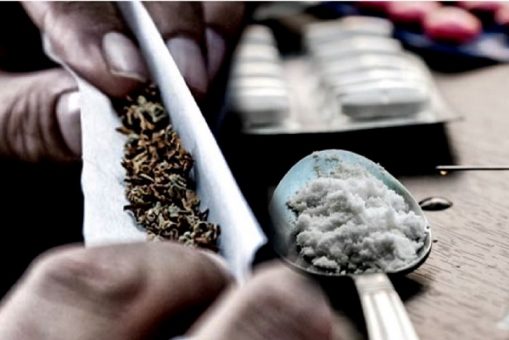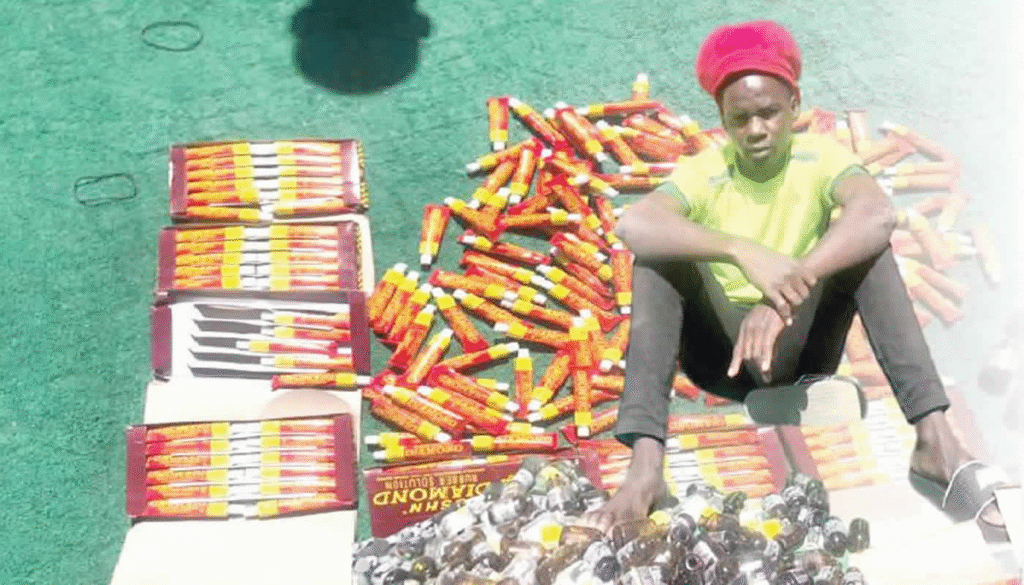
Suck-And-Die: Deadly Cheap Drug Turning Youngsters Into Zombies

Cheap, toxic and easily accessible, a ‘new’ street substance known as suck-and-die is fast gaining notoriety among the youth. Marketed in secrecy and inhaled for its fleeting high, the chemical solvent is turning teenagers and young adults into addicts while exposing them to grave health risks and sudden death.
A print journalist, GODFREY GEORGE recently carried a report where examines the rise of this unconventional drug, its deadly grip on users, and what experts say must be done to stem the tide
“It’s like a slow wind blowing inside your head. Your whole body just calms down, my brother. You feel alright, like your mind has finally settled.”

That was how 19-year-old Jacob described the dizzying sensation of inhaling a substance now ranked among the most dangerous highs for Nigerian youths.
Known on the streets as Sukudie, short for “suck-and-die”, the cheap, toxic narcotic has crept into back alleys, neighbourhood hangouts, and even school compounds, sinking its claws into vulnerable teenagers and young adults.
Jacob recalled first trying it before his 19th birthday. At the time, he was already weighed down by academic disappointments.
His first attempt at the West African Senior School Certificate Examination yielded only a single pass, a C in Civic Education, while the rest were outright failures.
Two years later, when he sat for the exam again, his entire centre’s results were seized by the West African Examinations Council over allegations of malpractice.
“Dem say we do malpractice for that centre. And make I no lie, my guy, we do. But that one no reach for dem to seize the whole paper,” he admitted with a shrug.
While his peers buried themselves in books and late-night study sessions, Jacob drifted further into a different kind of preparation. His days were often spent in a hidden den his friends nicknamed the bunker, tucked away in the Alapere area of Lagos, a place where smoke filled the air, cheap highs passed from hand to hand, and inhaling toxic substances became a daily ritual.
“There is really nothing we don’t smoke. But this one, they call suck-and-die, is my favourite because it does not involve smoking, and the effects are long-lasting. It just slows you down. It calms you down. Your body just begins to see better, clearer,” he explained, grinning as though reliving the sensation.
Although Jacob grew up in a household where money was not always scarce, his childhood was far from nurturing.
The only son of his mother in a polygamous family, he recalls a childhood clouded by constant reminders that he would never amount to anything.
“That stuff gets to me,” he said, his voice dropping. “Imagine your own parents telling you that kind of thing. It’s messy… it hurts. I think that’s how I turned to drugs. And besides, everyone around me was doing it.”
Investigations by newsmen show that “suck-and-die” is consumed like other inhalants. Users inhale chemical vapours directly from open containers, sniff rags soaked in the substance, or practise “bagging”, trapping fumes inside a plastic bag and repeatedly inhaling them.
Each method produces a quick high by attacking the central nervous system, but all carry the risk of sudden unconsciousness, poisoning and death.
Jacob said his preferred method was bagging, which, he felt, attracted less suspicion.
“This one is my best. Nobody will know what you are doing. They will think you are just playing with a bag, not knowing you are getting high. Many teenagers do this even in front of their parents, and they will not know.”
He also described other methods, such as inhaling directly from jerry cans and bottles, or holding rags soaked in the chemical against the nose and mouth to speed up intoxication.
Experts have identified this as one of the leading causes of sudden collapse, brain damage, and even death.
Some users go as far as spraying the vapour in confined spaces like cars or small rooms until the air becomes saturated, then breathing it in. A few, Jacob added, pour the chemical onto clothing near the mouth to intensify the fumes. These improvisations, specialists warn, are even deadlier.
The rising use of this substance has alarmed advocates in the drug rehabilitation space, who fear its spread could undo years of work in curbing substance abuse and drag more young people into the cycle of addiction
One of them is Genesis Ayuka, a campaigner who has used social media to mobilise against narcotics and send several young people into treatment.
He said, “Drug education should be mandated in schools. The root is to prevent the youths from even trying drugs, which are increasingly becoming more addictive and hazardous to physical and mental health. Addiction is a disease, and it is extremely difficult to control, even more difficult to cure.”
Cheap, potent and hidden in plain sight, “suck-and-die” is quietly destroying futures, pushing children into addiction and leaving families devastated.
The National Drug Law Enforcement Agency in November 2024 sounded the alarm over a new wave of dangerous substances spreading among young people in Nigerian cities, concealed under chilling street names.

The agency’s Director of Media and Advocacy, Femi Babafemi, disclosed that recent drug seizures in Lagos and Kano exposed the troubling rise of New Psychoactive Substances, along with other concoctions that now dominate street corners. Among them are narcotics nicknamed “Suck & Die,” “Rubber Solution,” “Dead Man”, and “Gelato.”
Sharing a video of the confiscated contraband on X (formerly Twitter), he urged parents, guardians and community leaders to remain alert to these threats that often lurk in plain sight.
“Narco-trend update: Parents, shine your eyes! Latest seizures by @ndlea_nigeria officers in Lagos and Kano reveal scary names of some substances, including NPS, we should all watch out for in our homes and communities: Suck & Die, Rubber Solution, Dead Man, Gelato,” Babafemi wrote.
The NDLEA warned that the growing appeal of these substances, marketed with catchy, sinister names, is driving a culture of secrecy, addiction and heightened risk among the youth.In November 2024, the Bauchi State Police Command announced the arrest of one Kabiru Adamu, alleged to be a dealer in “Suck and Die,” the deadly street name for methylene chloride (A50).
According to the command’s spokesperson, SP Ahmed Wakil, operatives of the Rapid Response Squad led by CSP Suleiman M. Tambuwal raided Tudun Wadan Dan Iya, popularly known as Bayani Gari, and recovered large quantities of the substance.
Items seized included 19 bottles of “Suck and Die” (30ml each), 264 pieces of OSHN Diamond Rubber Solution, and 363 empty bottles believed to be used for distribution.
“During interrogation, the suspect admitted that he worked for a boss who supplied the drugs and paid him after each sale,” Wakil disclosed. Adamu confessed that each bottle of “Suck and Die” sold for N300, while the rubber solution fetched N250 per piece.
The police described the raid as part of ongoing efforts to choke the supply lines of dangerous drugs fuelling addiction and crime in Bauchi metropolis.
The substance known on the streets as suck and die is, in fact, methylene chloride (CH₂Cl₂), also referred to as dichloromethane.
The Agency for Toxic Substances and Disease Registry describes it as a clear, colourless liquid with a sweet, ether-like odour, although experts warn that its smell is an unreliable safety signal.
Harmful levels can accumulate in the air long before the odour becomes detectable, making exposure all the more insidious.
At room temperature, methylene chloride evaporates quickly, releasing vapours that are readily absorbed when inhaled. According to the ATSDR, this is the most dangerous route of exposure.
Inhalation delivers the chemical directly into the lungs and, from there, into the bloodstream, where it exerts its toxic effects.
READ ALSO: US Court Orders FBI, Anti-Drug Agency To Release Tinubu’s Records
Ingestion can also cause acute poisoning and death, while prolonged skin contact, though slower in absorption, may lead to chemical burns and add to the body’s toxic burden.
Children face particular risks. Because of their smaller size and higher breathing rate, they absorb larger doses relative to body weight when exposed to the same concentrations as adults.
Worse still, methylene chloride vapour is heavier than air, meaning it tends to linger in low-lying areas, the very places children are most likely to breathe from.









